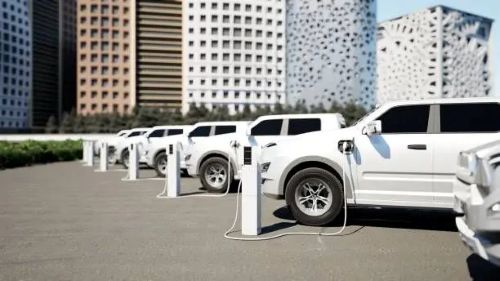


Electric Vehicle (EV) Fleet Charging: Powering the Future of Sustainable Transport
Topper Company is a leading professional EV chargers manufacturer in China, providing dependable electric vehicle charging stations and comprehensive charging solutions.
As electric vehicles (EVs) rise in popularity, fleet operators face growing pressure to electrify. Whether it’s a delivery service, government fleet, or rideshare operation, maintaining uptime, efficiency, and cost control is key. EV fleet charging is more than plugging in—it’s a system of smart, scalable infrastructure that keeps electric fleets moving reliably.
1. Private (Depot-Based) Charging
Private chargers are installed at company-owned depots or warehouses and serve only the organization’s fleet.
✅ Pros: Full control, lower long-term costs, scheduled overnight charging
⚠️ Cons: High upfront investment, electrical upgrades may be needed
2. Public Charging Networks
Ideal for fleets operating across wide areas or without a fixed base.
✅ Pros: Flexible, no infrastructure costs
⚠️ Cons: Higher energy rates, limited availability, slower speeds
3. Home Charging for Employees
Suitable for distributed fleets or vehicles taken home by drivers.
✅ Pros: Convenient, low-cost setup
⚠️ Cons: Reimbursement tracking, variable home infrastructure
1. Charging Speed & Power Output
Match charger type to your fleet’s needs:
AC Level 2 (7–22 kW) for light-duty fleets
DC Fast Charging (50–350 kW) for rapid turnaround
2. Scalability
Choose modular, future-ready systems with support for open standards like OCPP. Ensure room to expand as your fleet grows.
3. Smart Charging Features
Intelligent chargers enable load balancing, peak shaving, remote diagnostics, and energy tracking—reducing costs and improving reliability.
4. Connector Type & Port Quantity
Ensure compatibility with vehicle ports (CCS, CHAdeMO, J1772). Plan for simultaneous charging and redundancy for high-demand times.
5. Durability
Outdoor chargers need weatherproof designs with high IP ratings for protection in harsh environments.
6. ROI & Cost
Factor in hardware, installation, and utility upgrades. Balance initial costs with long-term savings and take advantage of EV incentives or rebates.
7. Fleet Fit
Consider your fleet’s duty cycle:
Daytime deliveries need fast charging
Buses or shuttles may benefit from overnight depot charging
Modern EV fleets benefit from smart fleet management systems that integrate charging data with vehicle telematics. These systems enable:
Automated off-peak charging
Route planning based on vehicle charge
Battery health monitoring
ESG reporting and compliance
Strategic deployment also involves analyzing site capacity, vehicle usage, and future growth. Many fleets combine private and public charging or even add renewable energy systems to further reduce costs.
Electrifying your fleet is a forward-thinking move—but it requires the right charging strategy. By choosing scalable, smart EV charging infrastructure, operators can lower costs, improve reliability, and future-proof their operations.
The fleets that act now—deploying efficient, intelligent charging solutions—will lead the transition to sustainable, modern mobility.Know more about Google SEO Directory
